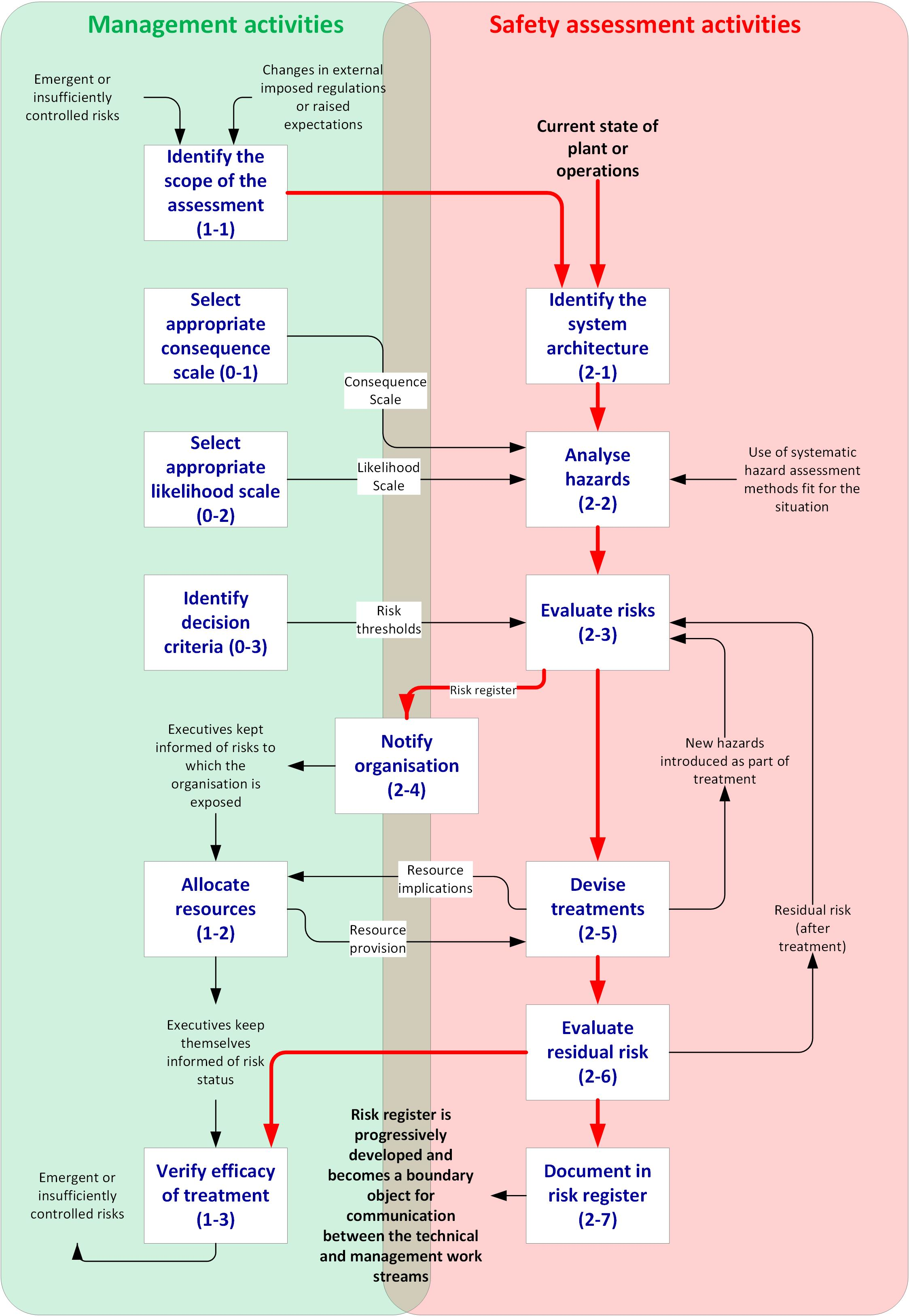Dr Dirk Pons of the Department of Mechanical Engineering at the University of Canterbury, Christchurch, and member of our executive committee, recently published the following article: Alignment of the Safety Assessment Method with New Zealand Legislative Responsibilities
Abstract:
Need—National legislative health and safety (H&S) frameworks impose requirements but grant self-management to organisations. Consequently variability arises in management systems, and some organisations struggle to achieve successful implementation. The risk assessment process is key to the H&S management system, and could benefit from greater consistency and better external alignment with the legislative framework of the jurisdiction.
Approach—The harm categories in the New Zealand (NZ) Act were adapted into a consequence scale. A non-linear scale was developed for the consequence axis to represent the disproportional nature of catastrophic harm outcomes compared to minor injuries. A hazard assessment process was devised based on systems engineering methods. Organisational decision-criteria were derived from the communications requirement in the Act, and these thresholds linked to expected treatments.
Originality—A method is providing for aligning risk assessments with a national legislative framework, and integrating the technical aspects of risk assessment with the management processes. The approach also more explicitly includes recovery actions in contrast to existing methods where prevention dominates. Regarding the management aspects, it shows how thresholds may be defined relative to the legislation, to give clear expectations regarding treatment and internal communication, thereby assisting executives (‘officers’ in terms of the NZ Act) meet their duties.

This is an open access article distributed under the Creative Commons Attribution License which permits unrestricted use, distribution, and reproduction in any medium, provided the original work is properly cited.